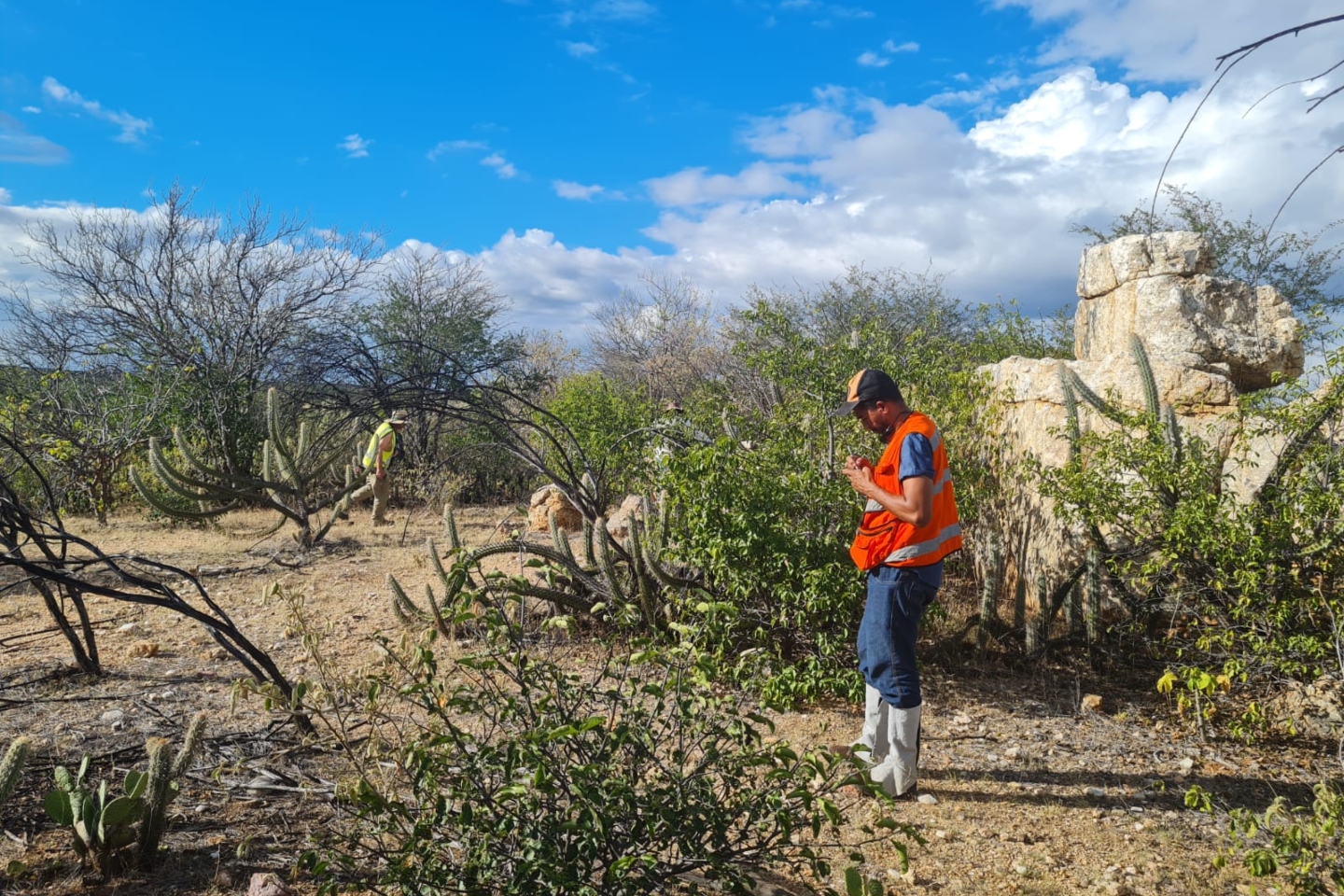Stream geochemical sampling by Gold Mountain at its Cerro Cora-Porta D’Agua project in Brazil has confirmed that lithium anomalies correlate with niobium-tantalum ratios and may help the company identify lithium-rich pegmatites. Management says it found that a fine sample fraction provided better anomaly definition and it used the method’s results in all subsequent analyses and interpretations.

Stream geochemical sampling by Gold Mountain at its Cerro Cora-Porta D’Agua project in Brazil has confirmed that lithium anomalies correlate with niobium-tantalum ratios and may help the company identify lithium-rich pegmatites.
Management says it found, during its recent 54-sample stream geochemical program, that a fine sample fraction provided better anomaly definition, prompting it to use the method’s results in all subsequent analyses and interpretations.
The sampling program involved two size fractions at each site – one with a coarse 180-micron mesh and the other a significantly-finer 10-micron mesh. Analytical results from the two fractions were then compared.
Results show that several lithium anomalies are associated with mica schists between two S-type granites. More significantly, they also reveal that lithium anomalism in the area correlates with niobium-tantalum ratios.
The significance of the niobium-tantalum ratio is that the two elements have a high degree of geochemical coherence, meaning that they are closely associated in most rocks in which they occur. The two elements are opposing members of a solid solution series where the ratio changes according to the degree of differentiation that has taken place in the melt.
Variations in the ratio may help to indicate pegmatites where a higher level of differentiation has occurred and that may help in exploration to distinguish pegmatites with higher lithium endowment.
Gold Mountain says it found that by plotting anomalous lithium against niobium-tantalum ratios and other elements with strong lithium correlations, it has derived an index that can distinguish lithium-caesium-tantalum (LCT) pegmatites of interest from others that would be likely to have a lower lithium endowment. It adds that many known pegmatites in and around the company’s tenements have been mined previously for tantalum.
The potentially valuable tool will almost certainly require progressive validation and refinement against more data. The company says it has already prioritised follow-up areas and hopes to locate pegmatites that in many cases have not yet been identified.
Management says pegmatites with sufficient scale will be further evaluated by mapping or soil sampling to define drill targets, which is likely to provide additional ground for “training” and refinement of its method. It says that when all remaining results from the project area have been interpreted, it will rank the targets for follow-up work.
The more tools that can be brought to bear on identifying lithium-fertile pegmatites, the better – and Gold Mountain might well be onto a new angle that could prove to be applicable in areas with well-established wet drainage systems.
Is your ASX-listed company doing something interesting? Contact: matt.birney@businessnews.com.au













